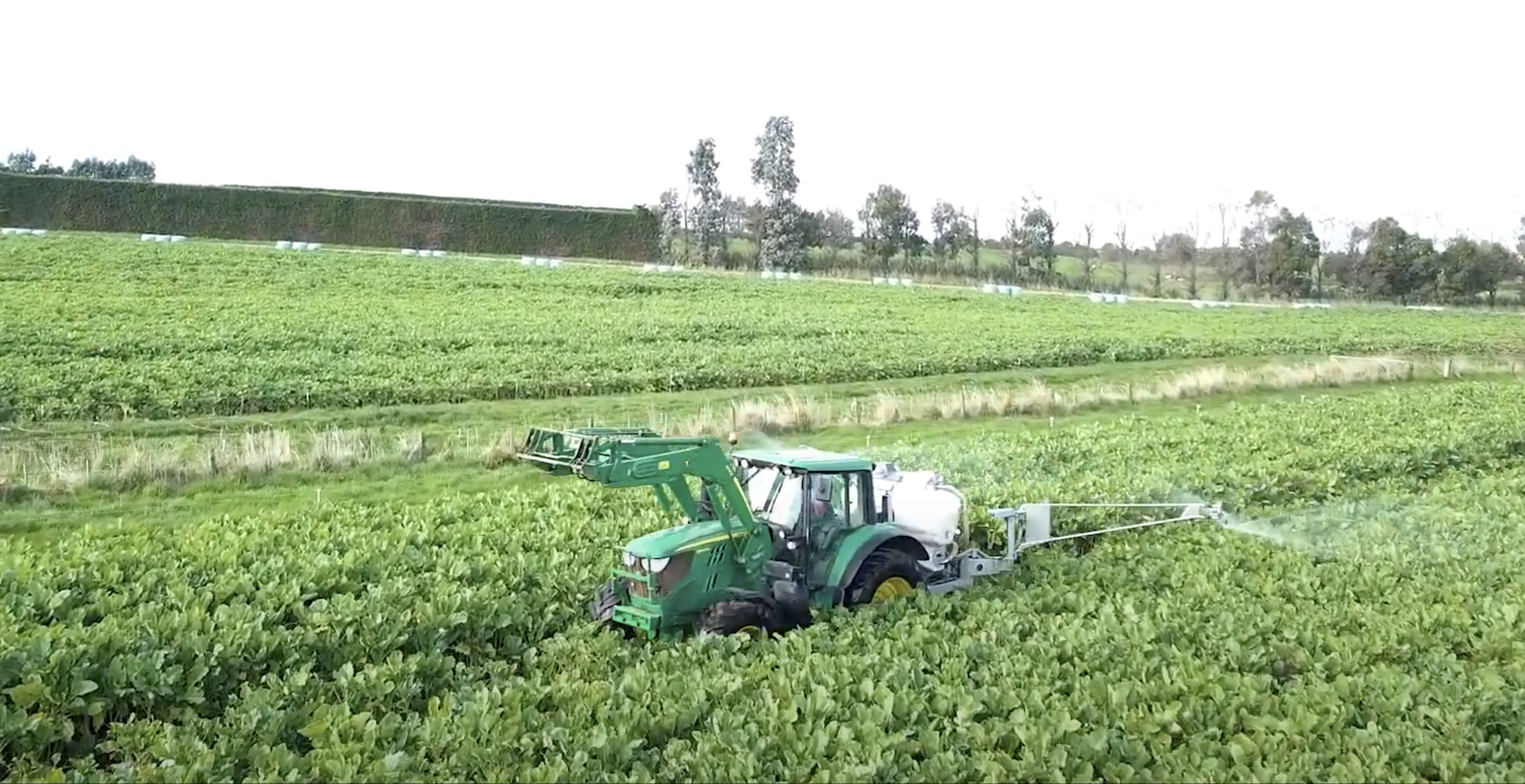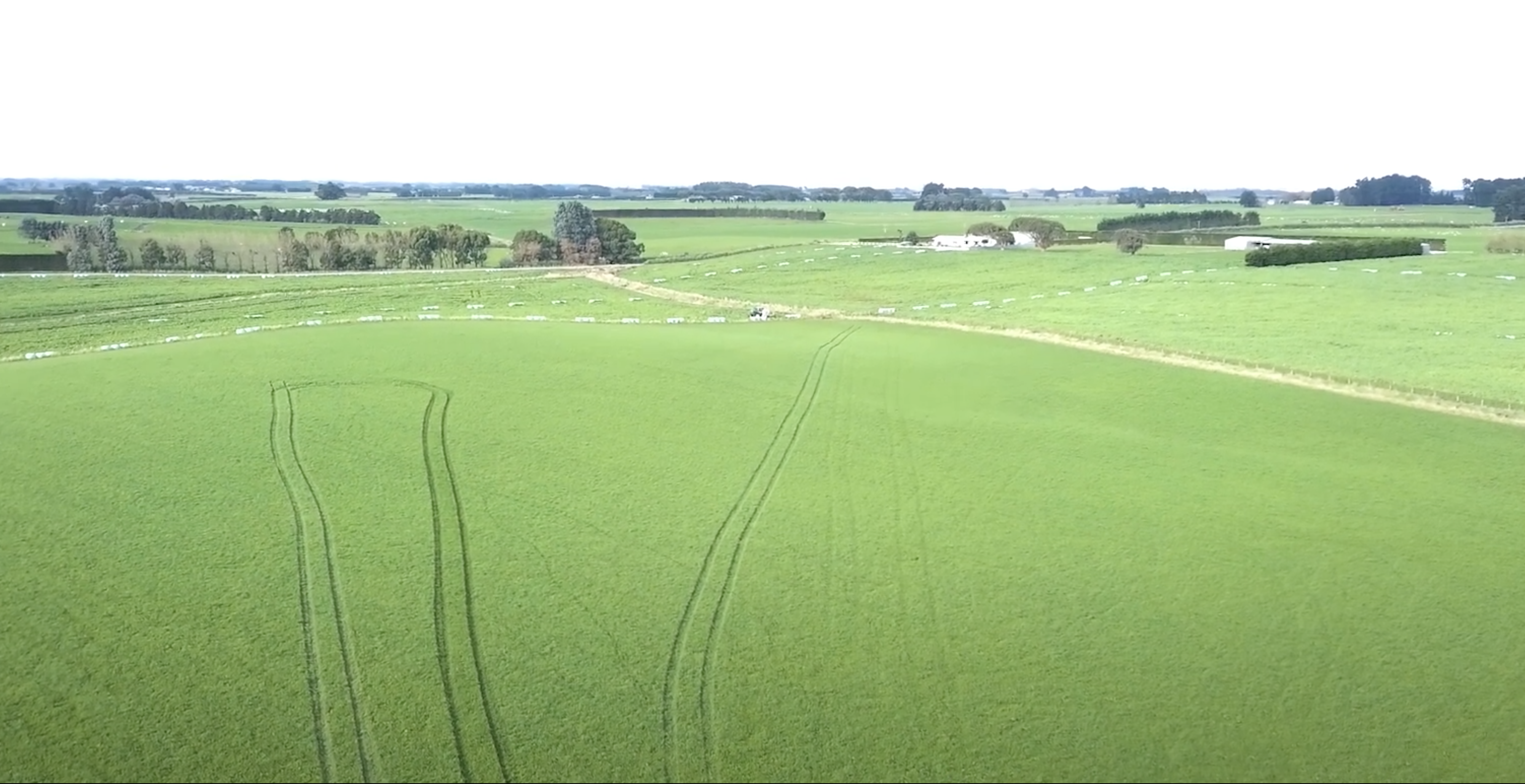
Georgie Galloway is the Farm Manager at Graham and Gail Marshall’s 160-hectare farm just outside of Invercargill, a livestock fattening operation that winters 1,500 dairy cows, raises 500 bull calves, and trade store lambs.
Before they started using Fish IT, the Marshall team applied 150 kg of urea three times per year to the kale crop, along with 450 kg of DAP. They bought in supplementary feed for the winter.
One day, having gotten halfway through applying solid urea to a 5 hectare paddock before running out, Graham thought to himself, “Yep, I’ll notice that in 2-3 months for sure.” There should have been a big deficit in crop growth (on one side of the paddock). “We thought that it would hurt our production.”
However, 2-3 months later Georgie says there was no difference at all, the side of the paddock that did have solid urea applied had grown no more than the side that hadn’t.
”Since using Fish IT our production of kale and grass has increased along with quality. We no longer need to buy in supplementary feed and the pastures have become higher in clover percentage that doesn't bloat stock.
Georgie GallowayFarm Manager
“So that was our main trigger for why we would look at something different.”
It was shortly after this that Georgie and Graham approached the team at Fish It.
The Marshalls apply Fish It in liquid form using the big spray nozzle of a Tow and Fert 1200. This system allows them to add other macro nutrients in liquid form in the same application.
The payback on the capital investment of the Tow and Fert was realised in the first year with savings achieved through lower synthetic inputs across the farm.
Less Synthetic Nitrogen
We have gone from using 450 kg of urea across the entire farm to 120 kgs in conjunction with 90 kgs of Fish IT.
Increased Feed Production
We used to make approximately 2,500 bales of hay on the farm, since using Fish IT that has increased to 3,000 bales per annum.
Cost Reduction
With the reduction in fertiliser costs from around $100,000 per annum, the Marshalls bought investment down to around $50,000 with more productivity.
“After we cut the grass for baleage we apply 30 litres of Fish It and 150kg of Serpentine Super 10K. We no longer use urea on the grass.”
The Marshall farm has increased baleage production by an additional 500 bales per year and no longer need to rely on supplementary feed.
”With the addition of Fish It we now use 70% less urea across the entire farm, we have better pastures, better crops, healthier animals and no need for pesticides.
Georgie GallowayFarm Manager
Looking ahead
The Marshall farm are an intensive farm operation that is three years into their Fish It journey.
The timing is right to conduct some further soil analysis to inform them on the soil structure and biology which will lead to further refinements in inputs to drive greater outputs.
We’ll follow these up in the next article on the Marshall farm journey.
Georgie’s Fish It journey
A shout out to our friends at Tow & Fert who captured the story of how Georgie has increased her production for wintering cows.
The Transition 3:21
Watch Georgie talk about the problem, the solution and the farms transition from synthetic fertiliser to Fish IT.
The Outcome 4:00
Georgie discusses the farms migration to a Fish IT lead land management strategy supported by smaller quantities of urea.
The Future 2:26
Georgie reflects on the future, on the lessons learned, observations and her expectations.








